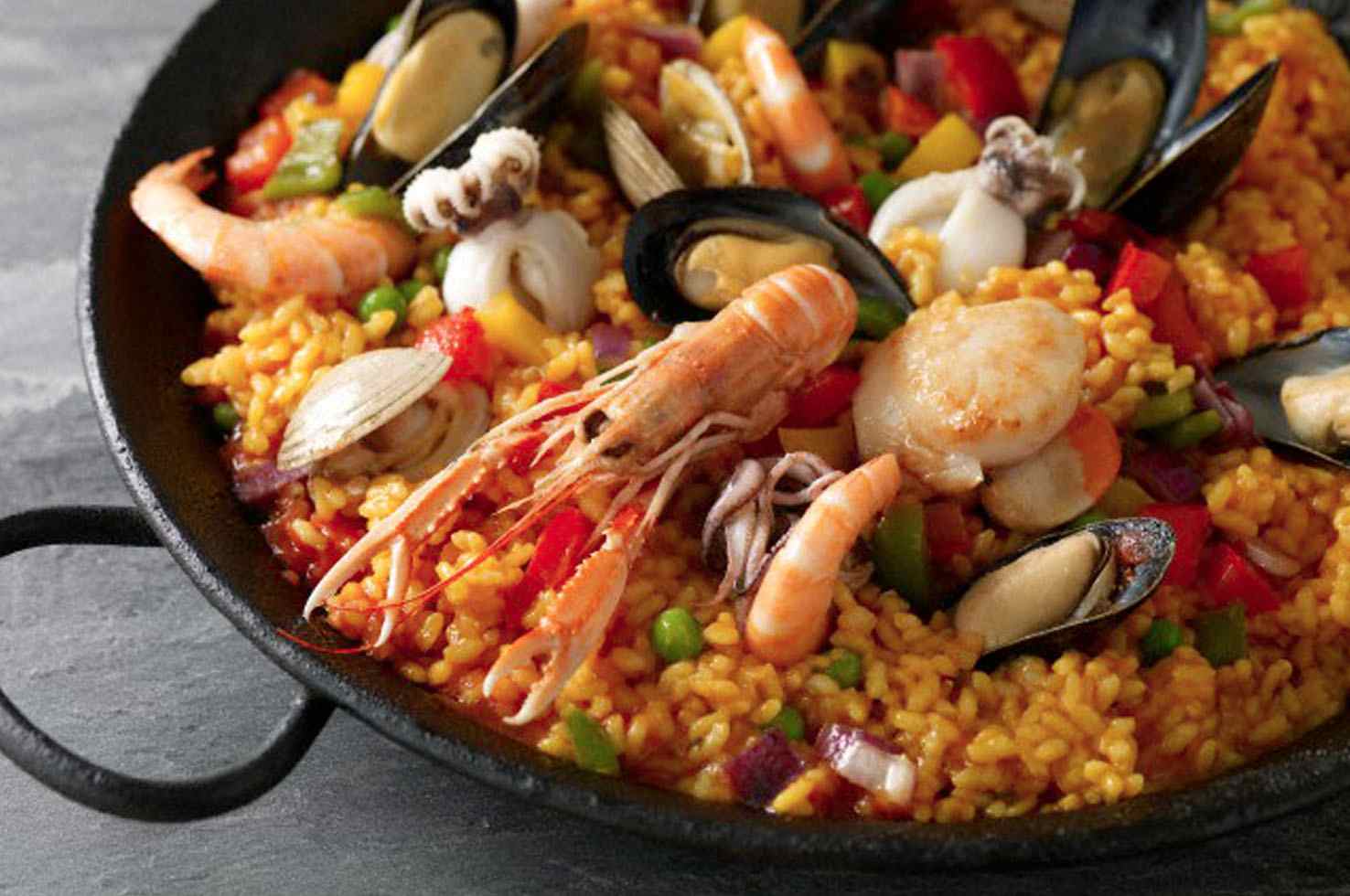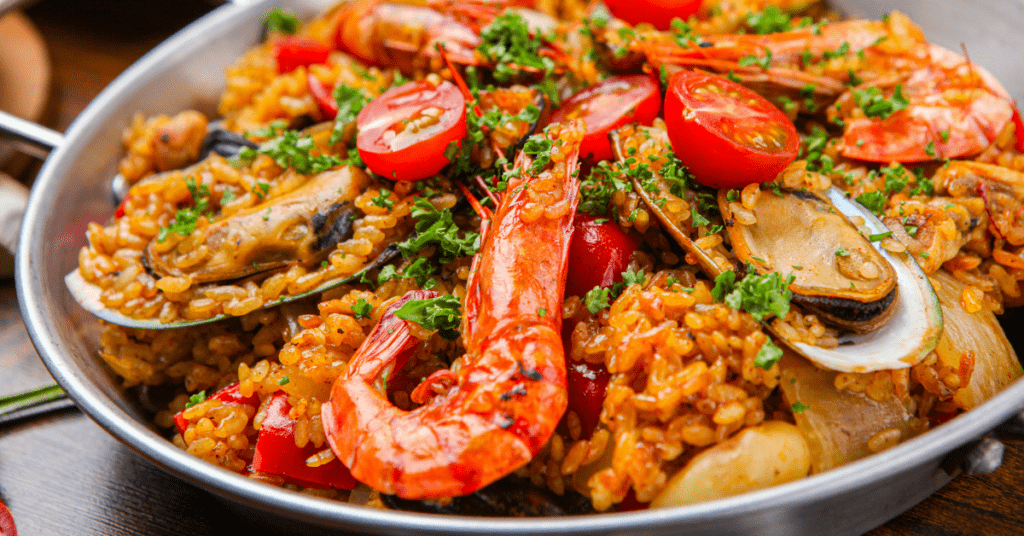Embark on a tantalizing culinary journey with our complete information to the most productive Spanish meals. From the colourful flavors of Andalusia to the cutting edge creations of contemporary gastronomy, this exploration will captivate your style buds and immerse you within the wealthy culinary heritage of Spain.
Get ready to savor conventional dishes that experience stood the take a look at of time, comparable to the enduring paella and the refreshing gazpacho. Delve into the evolution of Spanish delicacies, the place cooks seamlessly mix custom with innovation, growing culinary masterpieces that tantalize the senses.
Regional Spanish Delicacies

Spanish delicacies is famend for its variety and regional diversifications. Each and every area of Spain boasts a definite culinary id, influenced via native substances, cooking tactics, and cultural traditions.
Probably the most well-known regional cuisines is that of the Basque Nation in northern Spain. Basque delicacies is understood for its use of clean, native substances, comparable to seafood, greens, and meats. Basque cooks frequently make use of easy cooking tactics, comparable to grilling and roasting, to spotlight the herbal flavors in their substances.
Catalan Delicacies
Catalan delicacies, from the area of Catalonia in northeastern Spain, is influenced via each Spanish and French culinary traditions. Catalan dishes frequently characteristic a mix of clean seafood, meats, and greens. Probably the most well-known Catalan dishes is paella, a rice dish cooked with seafood, meats, and greens.
Andalusian Delicacies
Andalusian delicacies, from the area of Andalusia in southern Spain, is understood for its use of spices and herbs. Andalusian dishes frequently characteristic a mix of clean seafood, meats, and greens. Probably the most well-known Andalusian dishes is gazpacho, a chilly tomato soup.
Conventional Spanish Dishes: Highest Spanish Meals

Spanish delicacies is famend for its colourful flavors, contemporary substances, and various regional specialties. Conventional Spanish dishes show off the rustic’s wealthy culinary heritage, providing a tasty array of flavors and textures.
The next desk categorizes and describes one of the hottest conventional Spanish dishes, highlighting their area of beginning, key substances, and preparation strategies:
Widespread Conventional Spanish Dishes
| Dish Identify | Area of Beginning | Key Elements | Preparation Strategies |
|---|---|---|---|
| Paella | Valencia | Rice, seafood, meat, greens | Sautéed in a big, shallow pan |
| Gazpacho | Andalusia | Tomatoes, cucumbers, peppers, garlic, olive oil | Mixed and served chilled as a soup |
| Tortilla de Patatas | National | Potatoes, eggs, onions | Fried in a skillet till golden brown |
| Cocido Madrileño | Madrid | Chickpeas, meat, greens, broth | Stewed in a clay pot |
Fashionable Spanish Gastronomy

In contemporary many years, Spanish delicacies has passed through a outstanding evolution, with cooks pushing the bounds of conventional flavors and incorporating cutting edge tactics and substances.
Spanish cooks are famend for his or her skill to maintain the essence of conventional dishes whilst experimenting with new culinary probabilities. They’re the use of molecular gastronomy tactics, comparable to spherification and sous vide cooking, to create dishes which can be each visually surprising and bursting with taste.
Fashionable Spanish Eating places and Famend Cooks
Probably the most most famed trendy Spanish eating places come with:
- El Celler de Can Roca (Girona): A 3-Michelin-starred eating place identified for its cutting edge tasting menus that show off the most recent culinary tactics.
- Mugaritz (Errenteria): Any other three-Michelin-starred eating place this is well-known for its experimental dishes and its center of attention on sustainability.
- Arzak (San Sebastián): A two-Michelin-starred eating place that has been at the vanguard of contemporary Spanish delicacies for over 3 many years.
Those eating places, and lots of others like them, are serving to to form the way forward for Spanish gastronomy, showcasing the rustic’s wealthy culinary heritage whilst embracing new and cutting edge approaches to cooking.
Spanish Elements and Flavors
Spanish delicacies is famend for its colourful flavors and various substances. Those components mix to create a culinary revel in this is each distinctive and fascinating.
On the center of Spanish cooking lies a basis of crucial substances that outline its personality. Those come with olive oil, saffron, paprika, garlic, tomatoes, and onions.
Olive Oil, Highest spanish meals
Olive oil is a cornerstone of Spanish delicacies, used broadly for cooking, dressing, and keeping. Its wealthy, fruity taste provides intensity and complexity to dishes. Spain is the arena’s main manufacturer of olive oil, with areas like Andalusia and Catalonia boasting centuries-old olive groves.
Saffron
Saffron, a colourful spice derived from the stigmas of the saffron crocus, is extremely prized in Spanish cooking. Its unique earthy, floral taste and golden-yellow hue are used to give a boost to paellas, stews, and truffles.
Paprika
Paprika, constructed from floor dried peppers, is any other crucial Spanish aspect. It provides a colourful crimson colour and a rather smoky, candy taste to dishes. Paprika is utilized in quite a lot of arrangements, from chorizo sausage to seafood stews.
Spanish Meals Tradition
Meals holds a central place in Spanish society and tradition, deeply intertwined with traditions, social interactions, and regional identities. It transcends mere sustenance, turning into an integral a part of day-to-day lifestyles and a supply of nationwide delight.
Communal eating is extremely valued in Spain, with foods serving as events for circle of relatives, buddies, and communities to assemble and fasten. Tapas tradition, the place small plates of more than a few dishes are shared, fosters a convivial setting and encourages dialog. Regional meals gala’s show off native culinary traditions, celebrating the variety and richness of Spanish delicacies.
Cultural Importance Past Culinary Sides
Spanish delicacies holds cultural importance past its culinary delights. It displays the rustic’s historical past, geography, and social customs. Conventional dishes frequently elevate tales of cultural alternate and influences from other areas and civilizations. Meals additionally performs a job in non secular and festive celebrations, with particular dishes ready for explicit events.
Spanish Meals and Wine Pairings
The culinary panorama of Spain is famend for its colourful flavors and various regional cuisines. Spanish wines, similarly celebrated for his or her complexity and personality, be offering a phenomenal supplement to the country’s gastronomy. This pairing custom, deeply rooted in Spanish tradition, has developed over centuries, leading to vintage combos that give a boost to the joy of each meals and wine.
Pairing Concerns
When pairing Spanish meals with wine, a number of elements must be regarded as:
- Depth and Weight:The depth of the dish’s flavors must be matched with the frame and construction of the wine. Richer dishes, comparable to stews and grilled meats, pair neatly with full-bodied wines, whilst lighter dishes, like salads and seafood, supplement lighter wines.
- Taste Profile:The flavors within the dish must supplement and give a boost to the ones of the wine. For instance, dishes with acidic flavors, comparable to ceviche or gazpacho, pair neatly with wines with top acidity.
- Regionality:Conventional Spanish pairings frequently contain wines from the similar area because the dish. This way guarantees that the flavors of each the meals and wine have evolved in unity with each and every different.
Vintage Pairings
Listed below are some vintage Spanish meals and wine pairings:
| Dish | Wine |
|---|---|
| Paella | Rioja or Albariño |
| Jamón ibérico | Sherry |
| Tortilla de patatas | Tempranillo or Verdejo |
| Gazpacho | Manzanilla or Fino |
| Churros | Chocolate or candy wine |
Often Requested Questions
What are some standard conventional Spanish dishes?
Paella, gazpacho, tortilla de patatas, croquetas, churros
How has Spanish delicacies developed lately?
Cooks are incorporating cutting edge tactics and substances whilst keeping conventional flavors, growing a contemporary and complex culinary scene.
What are some crucial substances in Spanish delicacies?
Olive oil, saffron, paprika, garlic, tomatoes, seafood
